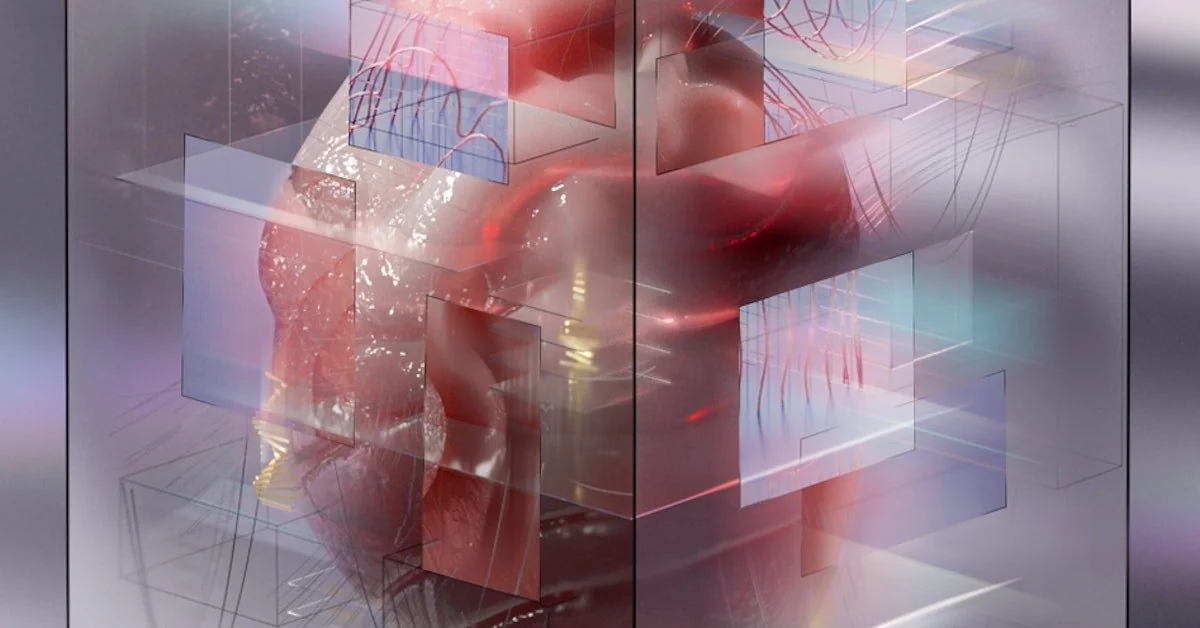
Luis López (Mallet) for Noema Magazine
Digital twins offer humankind the ability to command virtual replicas of forests, oil fields, cities, supply chains — and even, maybe one day, our very bodies.
BY JOE ZADEH, a writer based in Newcastle.
On the morning of June 24, 1993, Yale University Professor David Gelernter arrived at his office on the fifth floor of the computer science department. He had just returned from vacation and was carrying a large stack of unopened mail. One book-shaped package was in a plastic ziploc — he thought it looked like a PhD dissertation. As he unzipped it, pungent white smoke poured out, followed by what he later described as a “terrific flash.” He never heard the bang. Shrapnel shot into his eyes, hands and torso, as well as the steel file cabinets around him. A fire ignited and triggered the sprinklers in the ceiling, which began to soak his books and papers.
Gelernter, as he later wrote in his memoir, had been “blown up.” He was the 14th person attacked by a serial killer who was still then at large and known only as the “Unabomber.” From 1978 to 1995, Theodore John Kaczynski, fueled by an ideology that sought to bring about the destruction of modern technological life and a return to primitive ways, murdered three people and injured 23 in a brutal mail-bombing campaign. Gelernter’s lungs and other internal organs were damaged, he lost the vision in his right eye and most of his right hand was destroyed. But he survived.
Around two years later, another letter from Kaczynski arrived at the computer sciences department for Gelernter. No bomb this time — just a typewritten message in which Kaczynski explained the attack was provoked by Gelernter’s most recent book: a speculative work of nonfiction titled “Mirror Worlds.”
Back in 1991 when the book was first published, just over 1% of Americans were using the internet. But Gelernter claimed computing was about to revolutionize life on Earth. “This book describes an event that will happen someday soon,” he wrote in the opening line. “You will look into a computer screen and see reality. Some part of your world — the town you live in, the company you work for, your school system, the city hospital — will hang there in a sharp color image, abstract but recognizable, moving subtly in a thousand places.”
In essence, Gelernter believed that every aspect of life could soon be modeled in a parallel digital simulation. Everything happening in our lived reality would be tracked and monitored and fed into software “by a steady rush of new data pouring in through cables” to create a high-fidelity real-time digital representation of the world and all of its pulsing, swarming and sensuous qualities. This would be like Mark Zuckerberg’s metaverse on steroids: our exact world, our very lives, all digital. And you could view, manipulate, experience and interact with this mirror world, like a child with a dollhouse. A dashboard for reality.
These “high-tech voodoo dolls,” as Gelernter described them, “will mark a new era in mankind’s relationship to the man-made world. They change that relationship; for good.” It would be possible, he believed, to not just monitor what was happening around the world, but also to predict what could happen — endless simulations of possible future events would be running inside the mirror world. We could prepare ourselves for any outcome — any future — in the physical world because we would know what was coming.
“You will look into a computer screen and see reality. Some part of your world … will hang there in a sharp color image, abstract but recognizable, moving subtly in a thousand places.”
—David Gelernter
In 2007, Technology Review called “Mirror Worlds” “one of the most influential books in computer science” and Jaron Lanier, a founding father of virtual reality, once hailed Gelernter as “a treasure in the world of computer science.” Reviewing the book in The New York Times the year it was published, Christopher Lehmann-Haupt wrote that it “tells you how Hamlet’s dream may be fulfilled: ‘I could be bounded in a nutshell, and count myself a king of infinite space.’”
Gelernter believed mirror worlds might spring to life in the decade after his book was published, but nothing close came to pass. The dream was beyond the available technology. The buzz subsided.
There’s a phrase in the science fiction community known as “steam-engine time”: when lots of people have the same idea independently at the same time. It can be traced back to a line in Charles Fort’s 1931 novel “Lo!”: “A tree cannot find out, as it were, how to blossom, until comes blossom-time. A social growth cannot find out the use of steam engines, until comes steam-engine time.”
In the mid-2000s, a manufacturing expert named Michael Grieves started to spitball ways to make factories more efficient. Instead of a manager peering down on the factory floor from above, trying to sense how things were going, Grieves thought there should be an exact virtual replica of every physical nook, cranny, machine, forklift and worker that the manager could analyze on a computer screen. Create an endless stream of data from a network of sensors and cameras that flowed from the real factory to the virtual one, and you’d get an ever-changing real-time representation of its brick-and-mortar counterpart. Anything that changed in the factory would change in the model, instantly: the physical and the virtual locked together in what the French philosopher Jean Baudrillard might have called an “ecstasy of communication.”…
more…
https://www.noemamag.com/a-digital-twin-might-just-save-your-life/



